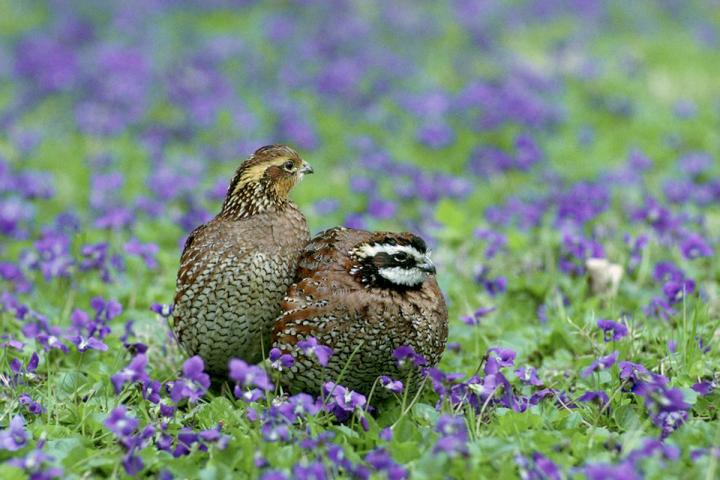
Credit: Photo by U.S. Fish & Wildlife Service
CHAMPAIGN, Ill. — Northern bobwhites are attracted to a habitat based on whether other bobwhites are present there, researchers at the University of Illinois at Urbana-Champaign report. This phenomenon, called conspecific attraction, could aid conservation efforts.
Bobwhites, Colinus virginianus, are resident birds – they decide where to live and stick to that decision for the rest of their lives, said Michael Ward, a professor of natural resources and environmental sciences who led the research.
“It’s an important decision,” he said. “It’s like sampling food at different restaurants before you decide where to eat.”
The researchers played recordings of bobwhite songs to see whether they could attract the birds to unoccupied sites in the Cold Springs area of Fort Polk, Louisiana.
“We played their calls on an MP3 player that was attached to a battery,” Ward said. “We tried to mimic their natural singing behavior by playing the recordings more often in the morning and less in the afternoon.”
The researchers studied the sites for three years. They did not play any recordings in the first year. The next year they divided the sites into those with and without recordings. The sites were flipped the third year.
“In the first year, we detected only one bird by listening for it,” said Jinelle Sperry, a professor of natural resources and environmental sciences and co-author of the study. “Once we started playing the recordings in the treatment sites, the number of birds detected went up.”
“The recordings brought in 12 to 15 birds,” Ward said. “We expected more bobwhites but they might not be moving around as much, so it may take several years for their population to build up.”
This method could help increase the number of bobwhites, whose populations have been declining for years because of habitat loss.
“Several areas have been restored for these birds,” Sperry said. “However, restoring habitats is often not enough to get them to come in. This technique is cost effective and noninvasive compared with traditional methods, such as translocation of birds to restored areas.”
The technique depends on the ability of the researchers to choose suitable habitat for the birds. “If you don’t understand the life history or habitat needs, you may risk bringing them into a low-quality habitat where the birds don’t do well,” Sperry said.
The researchers hope to improve their conservation efforts.
“For this study, we took advantage of sites that had already been undergoing restoration,” Sperry said. “In the future, we want to restore areas that are specific for these birds and use this tool to bring the birds in.”
The researchers report their findings in the Journal of Field Ornithology.
###
Editor’s notes:
To reach Jinelle Sperry email [email protected].
To reach Michael Ward, email [email protected].
The paper “Effect of conspecific attraction on the presence of northern bobwhites” is available online and from the U. of I. News Bureau.
Media Contact
Ananya Sen, Science Writer
[email protected]
Original Source
https:/
Related Journal Article
http://dx.




